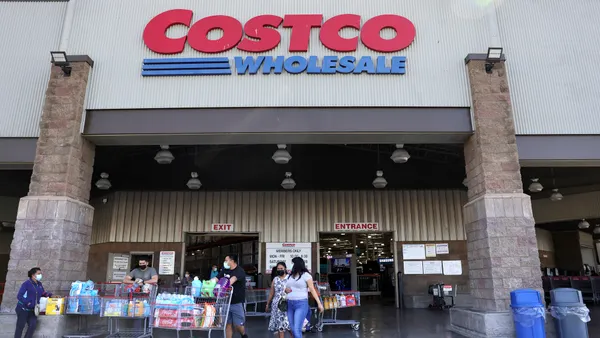Dive Brief:
-
Target, Lululemon Athletica and Levi Strauss, among others, have seen improvements in inventory accuracy and fulfillment processes from deploying RFID technology in stores, according to the Journal of Retail Analytics from Northwestern University’s Retail Analytics Council.
-
Executives from Target and Levi, as well as a former CIO of Lululemon and an executive from technology firm RFID Sherpas, recently participated in a panel moderated by Steven Keith Platt, director and research fellow at Platt Retail Institute and director of research at the Retail Analytics Council, on the topic.
-
The panelists agreed that while benefits are clear, some challenges to RFID implementation still exist in terms of getting organizational buy-in for projects from executives, as well as earning the understanding and support of store associates — but also that these hurdles could be overcome by focusing on the business goals retailers are aiming to achieve.
Dive Insight:
Target has been pressing hard on the RFID front for a few years now, and at one point had a goal to get RFID tags in all of its stores by last year. Karl Bracken, senior vice president of supply chain transformation at Target, said during the panel that the retailer has made progress and has been "pleasantly surprised by the benefits," but has also had to take baby steps.
"Our interest in RFID initially was in ensuring that we could have more accurate count integrity of our inventory throughout our network," he said. According to Bracken, many Target stores contain as many as 85,000 items in each store, with inventory turning over quickly and some products getting misplaced, broken or stolen. Using RFID helped the retailer keep better track of inventory and also improved Target’s ship-from-store and pick-up in-store services by allowing the retailer to find and prepare items more quickly. For example, Bracken said Target sales floors have RFID readers with "Geiger counter functionality" to help associates find apparel.
That being said, the technology is not as widely distributed as Target initially invisioned. "We had originally planned on wanting to scale this more broadly across other categories throughout our store. That's still our goal — to extend it further — but one of the hurdles we've been working through is determining where it makes sense on a category-by-category basis to use RFID. Where do you run into physical limitations with the tags not working?"
Bracken gave water bottles and cosmetics as examples of products that are difficult to place in RFID programs because of the physical nature of the products themselves.
Allan Smith, former senior vice president and CIO of Lululemon Athletica, also said RFID helped that retailer realize quick progress in inventory and fulfillment processes. "We were able to start to move on a strategy of driving ship- from-store and pick up-in-store, and really get to a position where we had systemic visibility across all our stores and ecommerce to know exactly what was in-store and online," Smith said. "To achieve the omnichannel fulfillment rates we were looking for, and to drive a best in class customer experience, very high inventory accuracy was required across all our stores and e-commerce."
Smith added, however, that a stumbling block to broad implementation of RFID can come from not getting buy-in from the functional groups throughout a retail organization and supply chain. Also, "having the in-store operational aspects of it very well understood and communicated, and then having associates trained to the point where they view it as a benefit to what they do day to day closes the circle in terms of sponsorship and buy-in for a successful rollout," he said.
Rene Saroukhanoff, senior director of global merchandise planning of reporting and analytics at Levi Strauss, said that another challenge to broad RFID implementation lies in the finer points of scaling upward and outward from a small, contained proof-of-concept test, like the one Levi Strauss runs at its headquarters store.
"How do you translate something that you're doing in a proof of concept in a store and scale that out on a larger level?" he said. "There are impacts to business process. There's employee training. Anytime you're touching store operations, it becomes a bit of a big deal. That has been the number one challenge, just trying to understand how you scale this."













